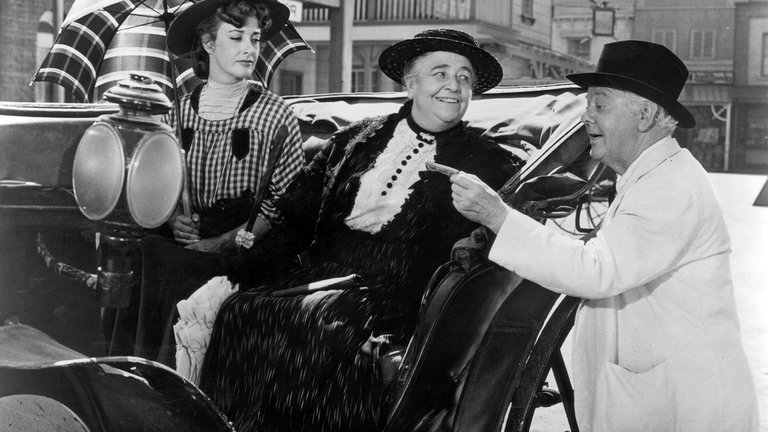Film Review: The Sun Shines Bright (1953)

In Hollywood, second chances are a rare and precious commodity. Yet, for John Ford – an esteemed director with an impressive filmography – such opportunities were not entirely out of reach. One of his personal favourites, the 1934 period comedy Judge Priest, despite being commercially successful in its time, is now comparatively obscure when compared to his iconic westerns from later periods. Unhappy with the original, Ford sought to rectify this oversight in 1953 with a new version titled The Sun Shines Bright.
Based on Irvin S. Cobb's short stories, like its predecessor, this film is set in Fairfield, Kentucky at the turn of the 20th century. The protagonist, played by Charles Winninger, is William Pittman Priest, a jovial, drink-loving judge and proud Confederate veteran who stands for election against his arch-rival, prosecutor Horace K. Maydew (played by Milton Burne). His campaign is disrupted by a series of events, including the return of Ashby Corwin (played by John Russell), a young man showing interest in Lucy Lee Lake (played by Arleen Whelan), schoolteacher and the ward of Dr. Lewt Lake; the arrival of an unnamed and mortally ill "fallen woman” (played by Dorothy Jordan), who happens to be Lucy Lee's mother and the daughter of respected General Fairfield (played by James Kirkwood); and the more immediate problem of U.S. Grant 'You Ess' Woodford (played by Elzie Emanuel), a banjo-playing black teenager, being accused of raping a young white girl.
The subplot about the attempted lynching was part of the original 1935 script, with Judge's friendly servant Jeffrey Pointedxeter, played by popular but later controversy-laden African American comedian Stepin Fetchit – reprising his role in the 1953 adaptation – being the target of lynchers. However, Fox Film Company executives deemed this scene too risky due to political controversies and possible backlash from audiences in the institutionally racist US South. In contrast, Ford worked with Republic Pictures, a relatively minor studio that granted its directors more creative freedom. This allowed Ford an opportunity to make things right by depicting the attempted lynching subplot.
Even without dealing with this dark subject matter, which was still relevant at the time of production, The Sun Shines Bright is a much more serious film than Judge Priest. Its protagonist must navigate not only racial prejudice but also issues of prejudice and hypocrisy. The script, penned by veteran Laurence Stallings, is nevertheless burdened by the suffocating limitations of the MPAA Production Code, which prevents direct discussions of sensitive topics like rape and prostitution. As a result, the film may be somewhat confusing for viewers who cannot decipher between the lines.
Republic Pictures' involvement didn't help matters, as they made some unfortunate cuts to Ford's original vision. It wasn't until 1990 that Ford's uncut version of The Sun Shines Bright became available to audiences.
Ford directs his film well, helped by a small army of talented character actors who were his old associates. Charles Winninger, a character actor with a long and respectable career, took the rare opportunity for a starring role and did a solid job. However, inevitable comparisons between his iconic predecessor Will Rogers make his performance a little too conventional and "safe." This reflected on the film itself, which, despite being well-received during its premiere and becoming another of Ford's personal favourites, failed to enter the same league as this director's most celebrated works.
Ford, while maintaining a veneer of nostalgia towards small-town America half a century ago, is very explicit in showing social divisions. Fairfield, like the rest of the country, was divided between supporters of the Confederacy and Union during the Civil War, reflecting not only in rival veterans' organizations but also in the rivalry between Republicans and Democrats. Drink-loving men are forced to hide their vice from women supporting the temperance movement. Moreover, there is a division between white and black citizens. However, Ford is an optimist, suggesting that all those divisions can be overcome by symbolic reunification under the US flag or wise leadership of the protagonist, whose bravery and common sense are given homage by an unofficial parade near the end of the film.
In conclusion, while The Sun Shines Bright may have its flaws and limitations, it remains a powerful and poignant film that showcases John Ford's directorial mastery. Despite falling short of his most celebrated works, this film stands as a valuable addition to Ford's body of work, offering a unique perspective on the complexities of small-town America during the early 20th century.
RATING: 6/10 (++)
Blog in Croatian https://draxblog.com
Blog in English https://draxreview.wordpress.com/
InLeo blog https://inleo.io/@drax.leo
Hiveonboard: https://hiveonboard.com?ref=drax
Rising Star game: https://www.risingstargame.com?referrer=drax
1Inch: https://1inch.exchange/#/r/0x83823d8CCB74F828148258BB4457642124b1328e
BTC donations: 1EWxiMiP6iiG9rger3NuUSd6HByaxQWafG
ETH donations: 0xB305F144323b99e6f8b1d66f5D7DE78B498C32A7
BCH donations: qpvxw0jax79lhmvlgcldkzpqanf03r9cjv8y6gtmk9
Posted Using InLeo Alpha